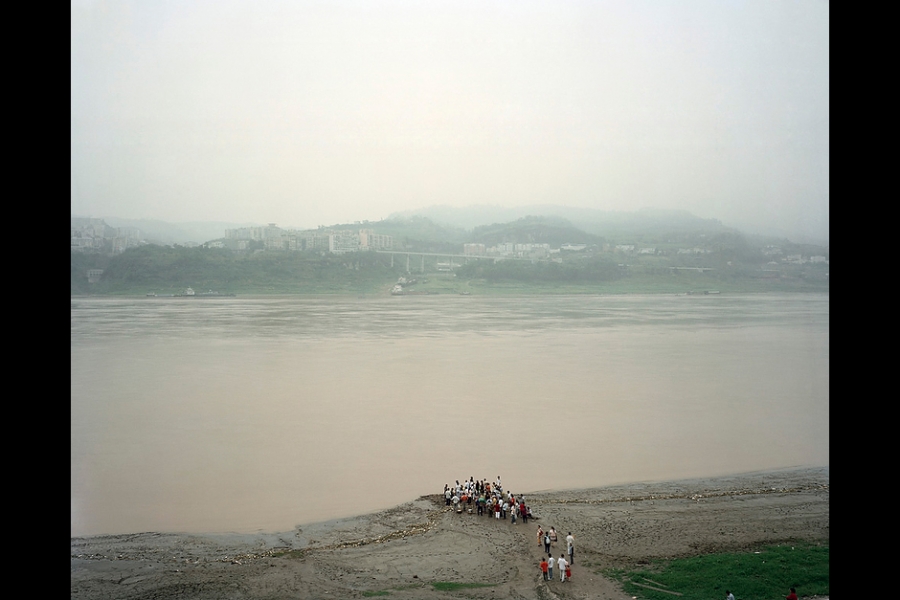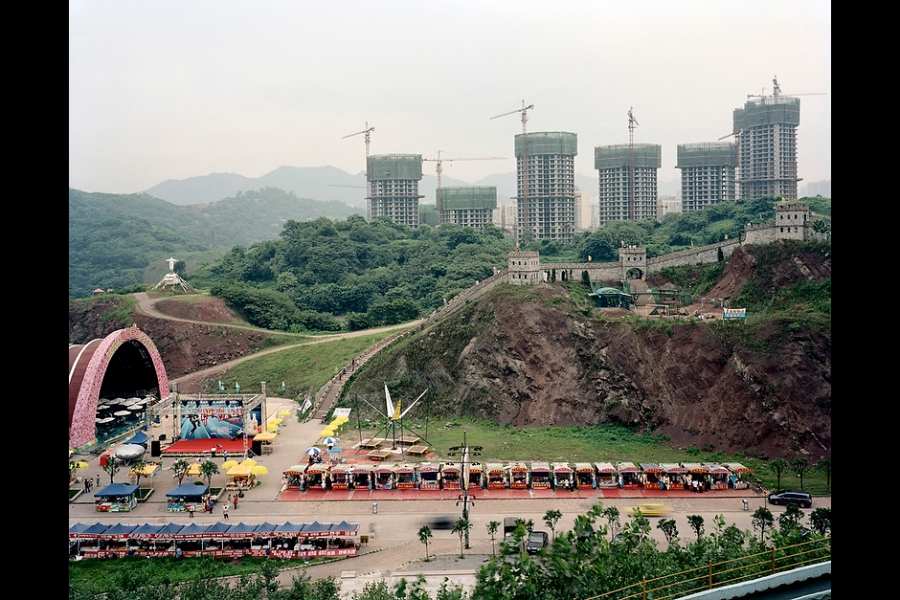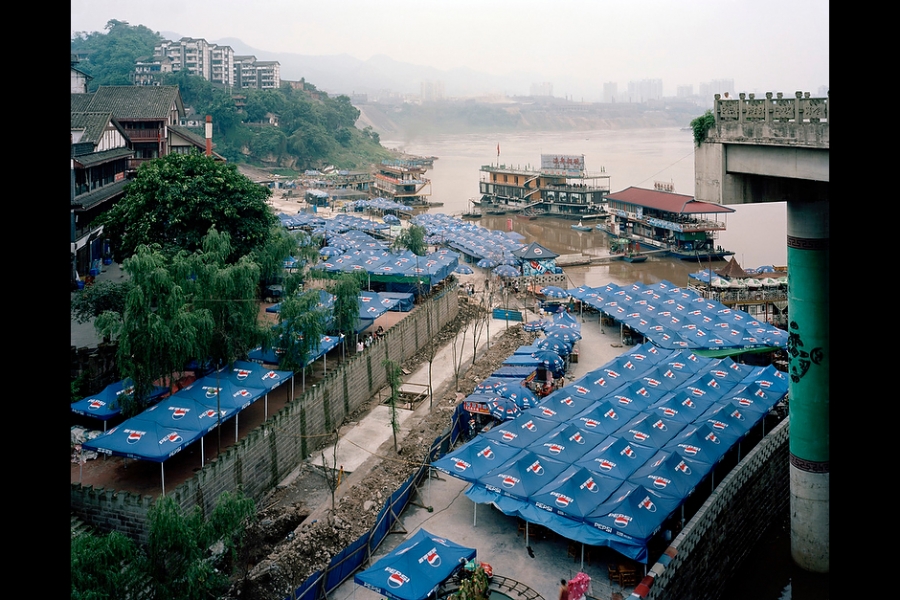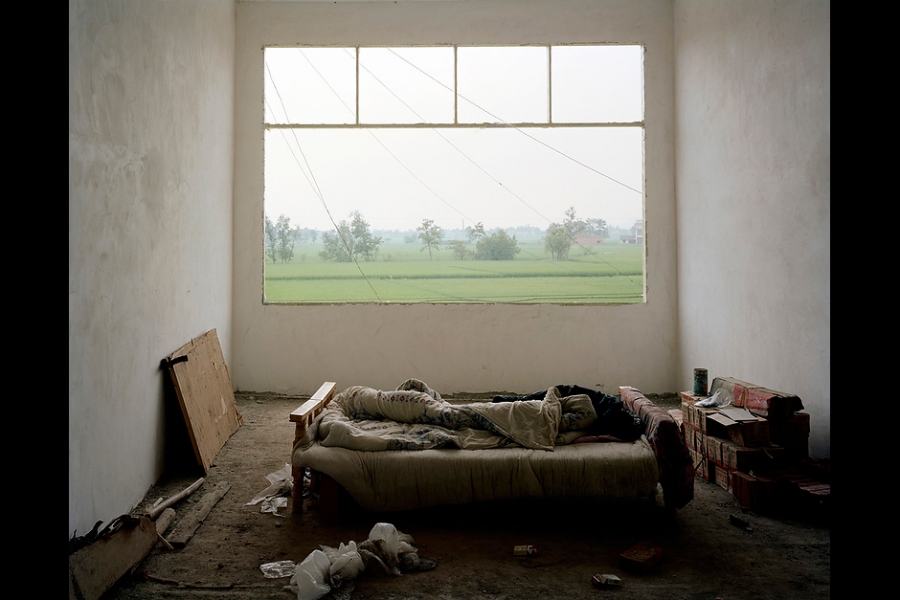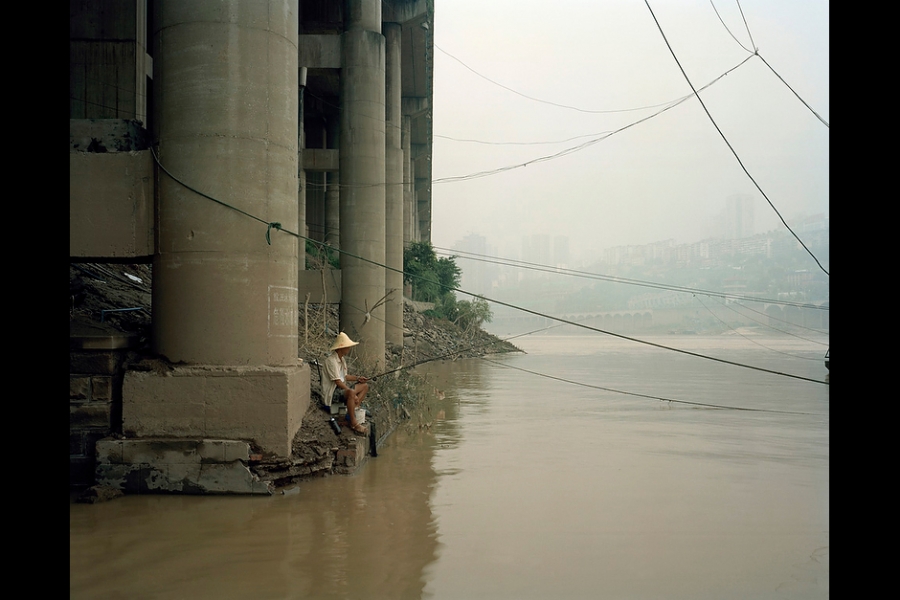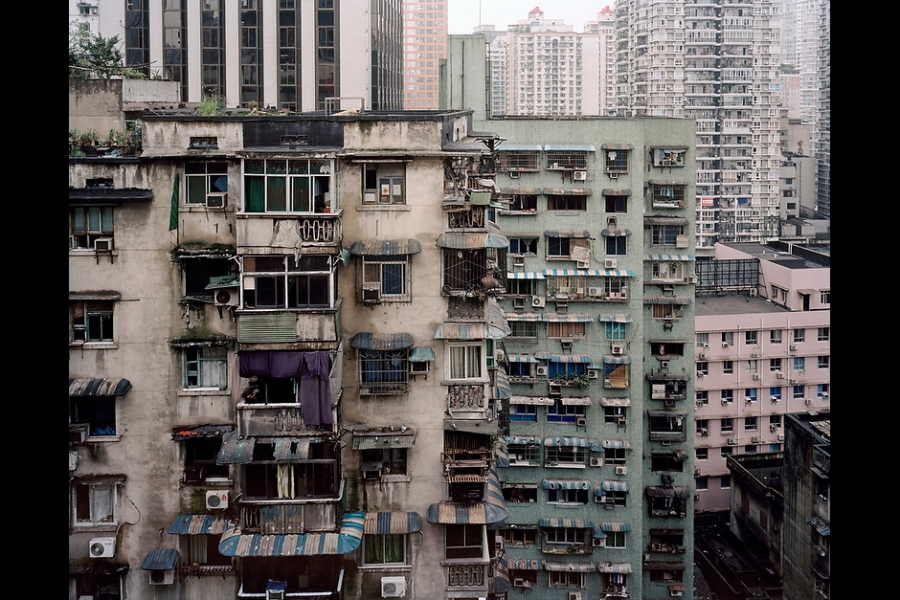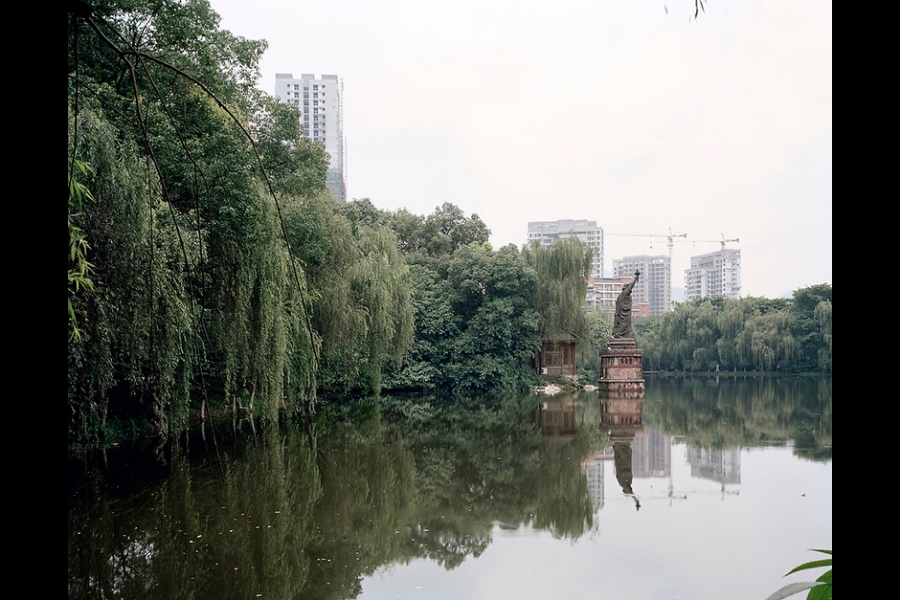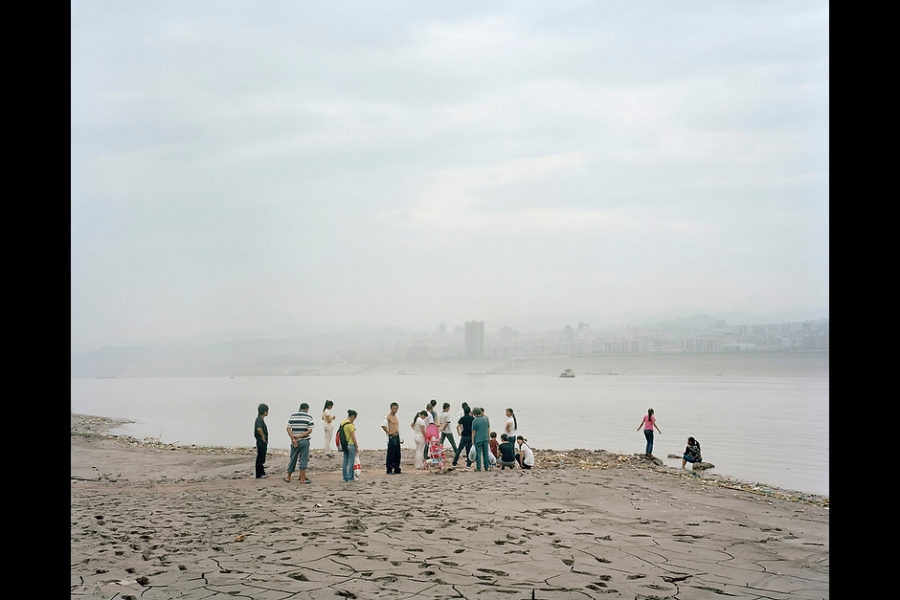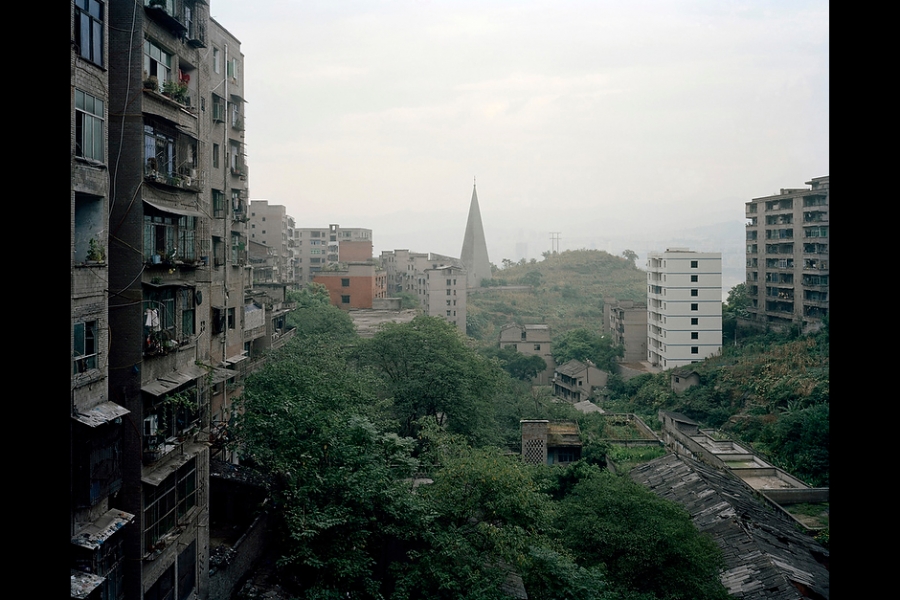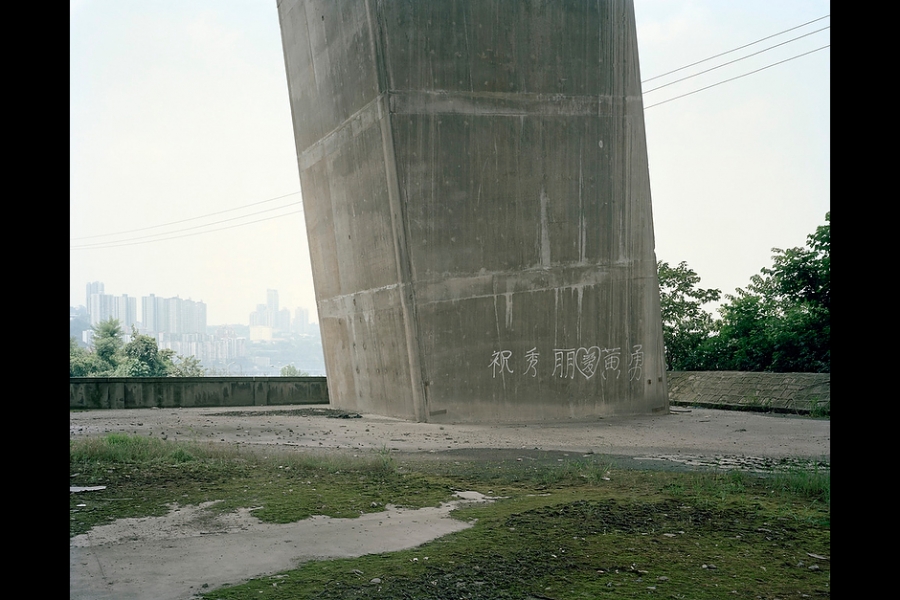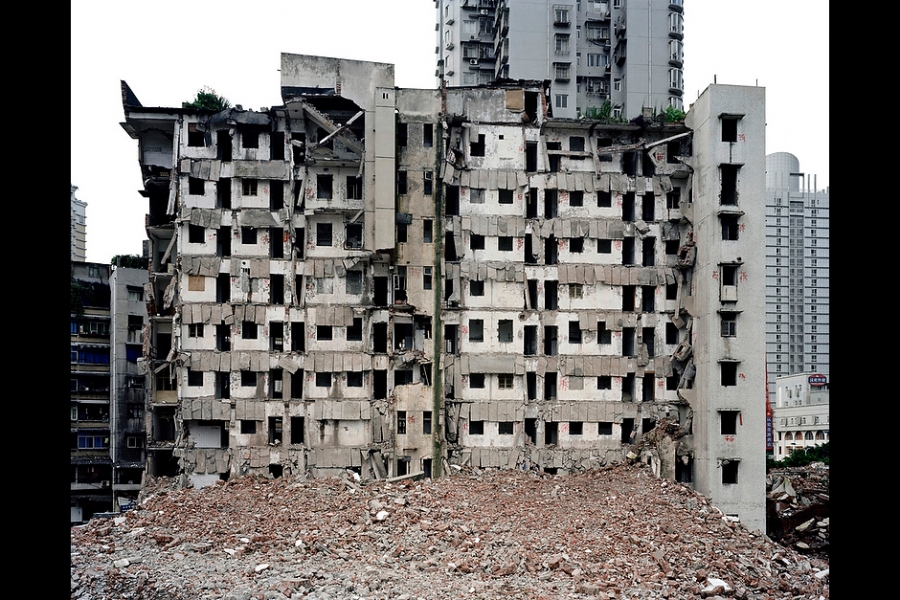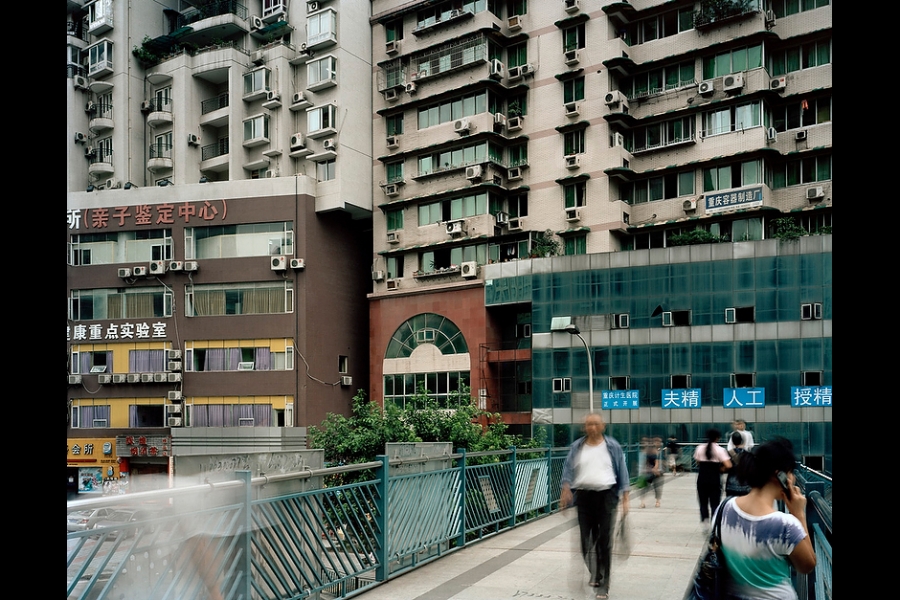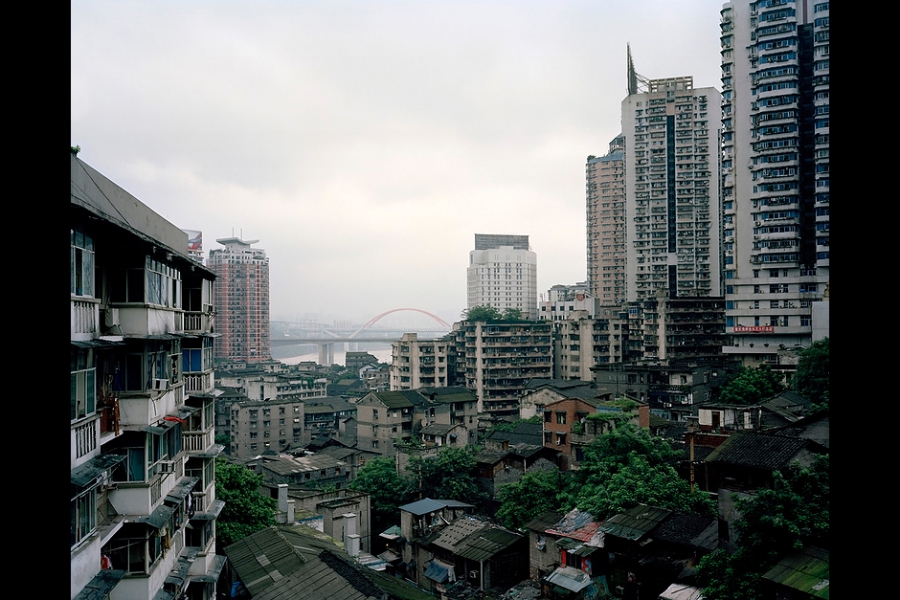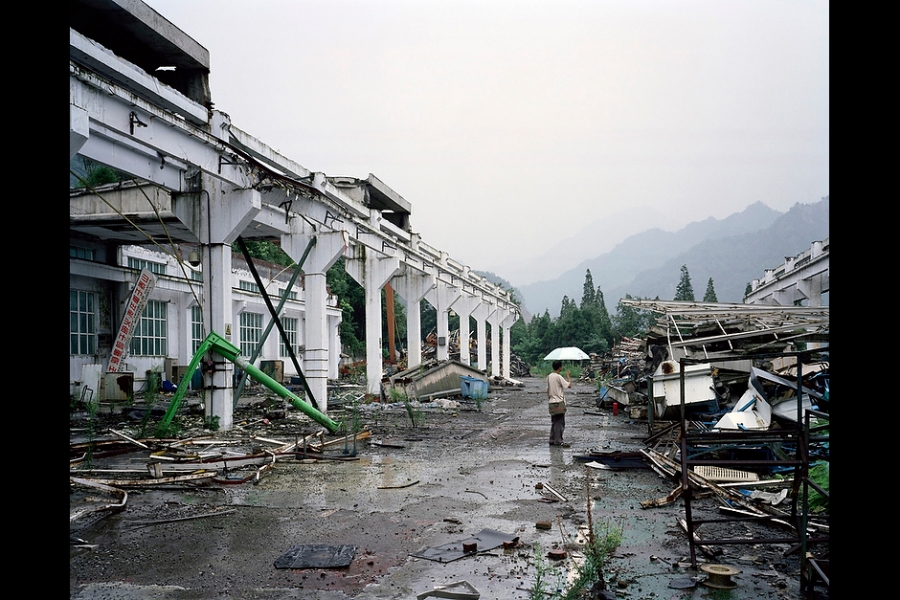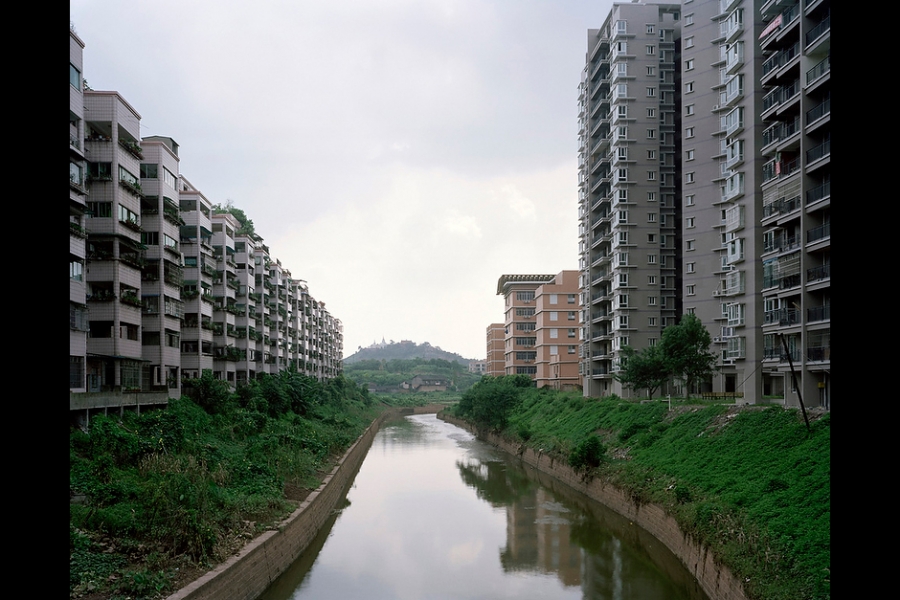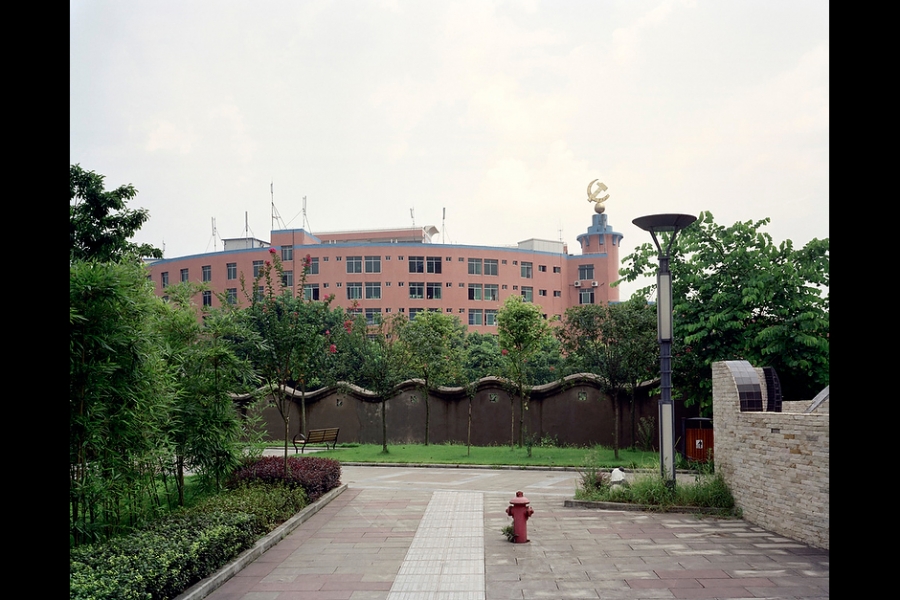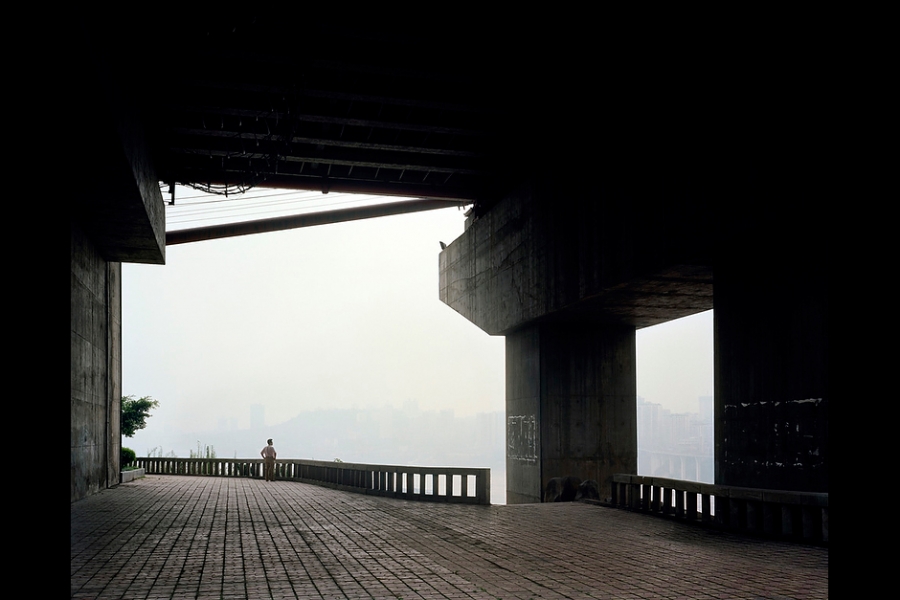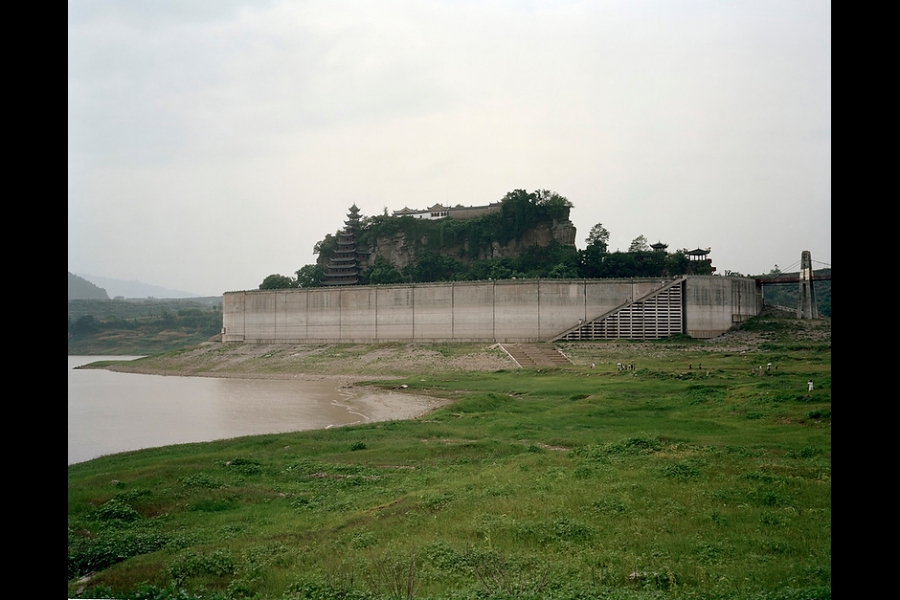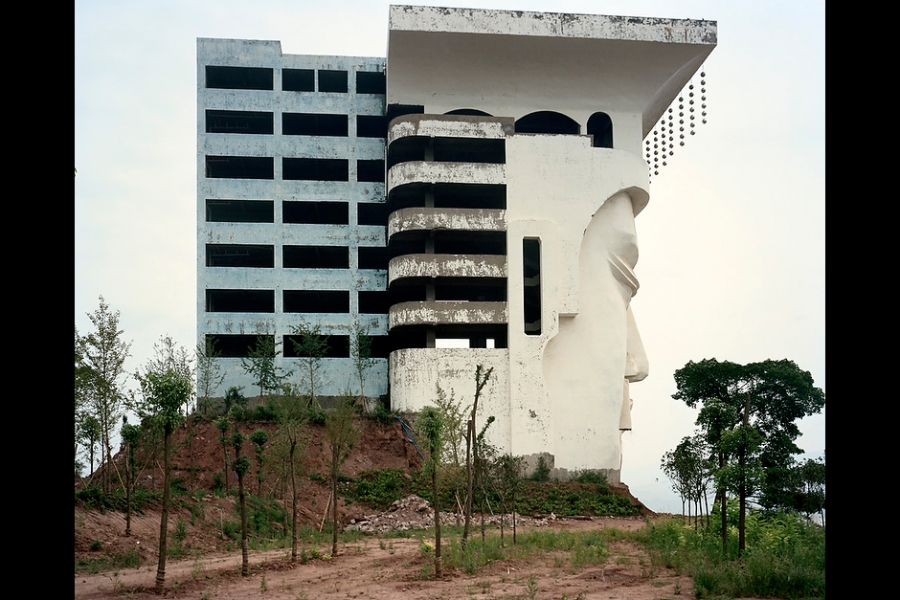Heteroscapes of Chongqing
“Heteroscapes” is a portrait of China’s contemporary urban spaces and landscapes during a period of transition. Through the economic boom of the past twenty years, these changes have shifted social power structures and subverted once common values. Equally as dramatic have been the effects of this growth on the rural and urban landscapes.
Chongqing’s population reached a peak of 30.5 million in the middle of the last decade. Chongqing is the largest municipality in the world and spreads more than 31,800 square miles. Together with its large rural population of more than 20 million, the cityscape itself endured a traumatic transition; it testifies to dramatic conflicts between traditional rural culture and forward-looking urbanization in China.
Wang writes—
These photographs serve as records documenting this change. Simultaneous demolition and construction erase the memories of the land. The lack of historical uniformity and rational planning both symbolizes and engenders a chaotic mix of social values and increasing materialism: a 2000-year-old city is razed and disappears; contradictory architectures arise beside each other; an ancient temple is protected from water raised by dam construction; suburban communities spring up through random overdevelopment; clinics offering egg fertilization and paternity tests stand side by side; religious and foreign commercial icons weave an unpredictable visual texture. The figures of contemporary landscapes and urban structures not only represent the current reality but also reflect the capricious potential desires of an expanding society.
This project’s title is inspired by Michel Foucault’s concept of heteropia: the point at which he saw a junction between reality and unreality that exposes existing conditions and reveals new illusions. In these photographs, the altered landscapes embody the desires of this developing society, complete with its dissolution and fascination with materialism.
I moved away from from Chongqing in 2000. As a child, I took the dramatic changes Chongqing underwent for granted, learning from my experiences that these changes were all about renewal—the old being erased and replaced, the new being erased and replaced again. Old buildings were pulled down to make way for ever widening roads, supermarkets, and apartment complexes, and in turn, these were soon pulled down to make way for the next realization. History was being smashed and rewritten again and again. With every return trip, I look at the landscapes that were once familiar but are now alienating to me. I always find something that punctures my nostalgic mood, revealing to me the residue of changes hidden in the scenes. These landscapes show me a more complicated reality than what I want to imagine.




